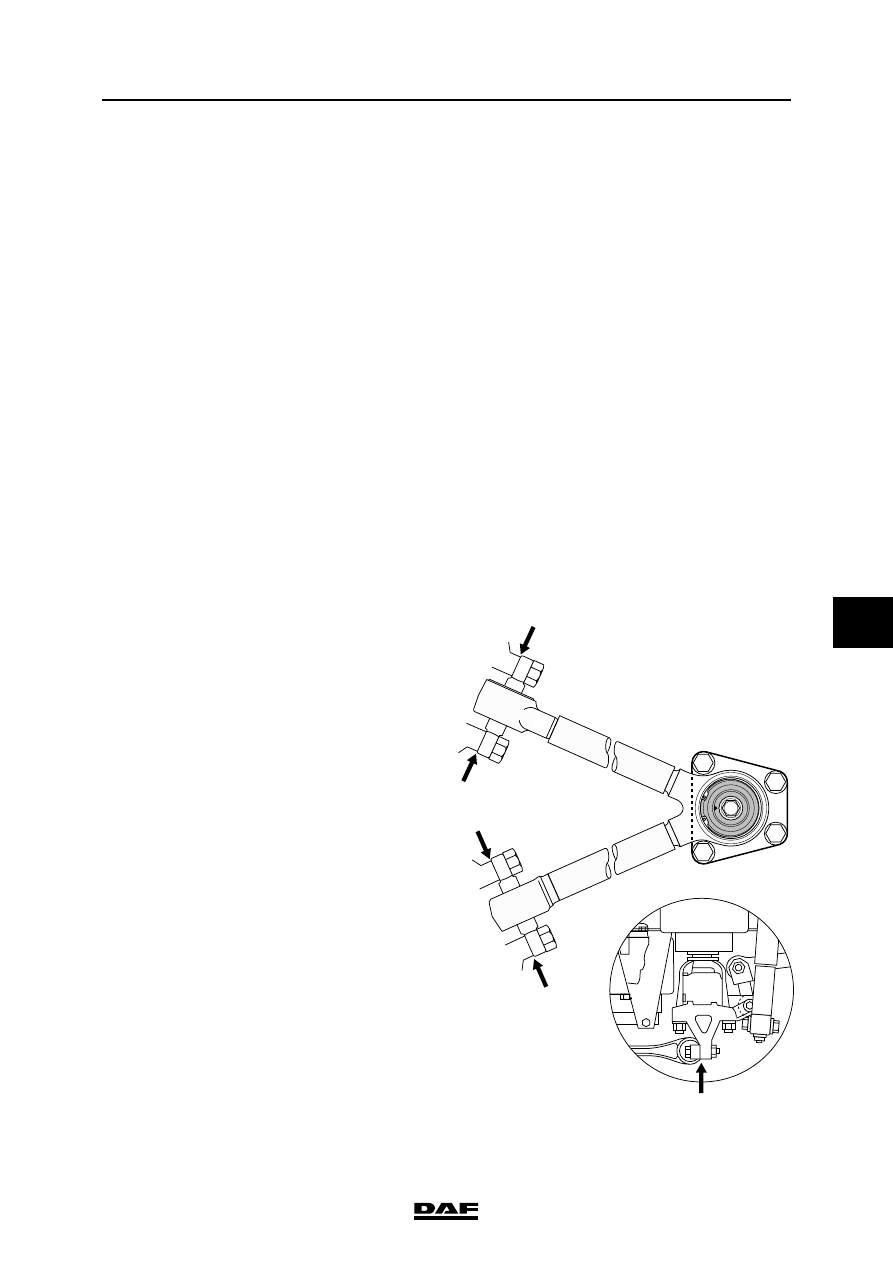DAF CF65, CF75, CF85 Series . Manual - part 997

©
200423
2-5
Inspection and adjustment
STEERED TRAILING SWIVEL AXLE
ΧΦ65/75/85 series
7
7
2.2 INSPECTION AND ADJUSTMENT, CASTER
Inspection of caster
1.
Place the vehicle on a level and horizontal
surface.
2.
Put the trailing axle in the "straight ahead"
position.
3.
Use high-quality wheel alignment equipment
for the inspection. The equipment must be
calibrated regularly and preferably be of the
type that can be calibrated before every use.
4.
Follow the instructions for the wheel
alignment equipment carefully.
5.
Compare the reading with the specified
value. See 'Technical data'.
6.
Carry out the caster measurement on the
other axle side too.
If different readings are obtained, the axle
suspension should also be inspected for
deviations.
Adjusting the caster
1.
Adjust the caster by fitting hardened steel
washers between attachment of the torque
rods or the triangular link
(DAF no. 0202838). The washers are 3 mm
thick. Grind the washers if necessary. The
application of more than one washer per bolt
is not acceptable.
2.
Repeat the measurement once the steel
washers have been fitted.
S7 00 728